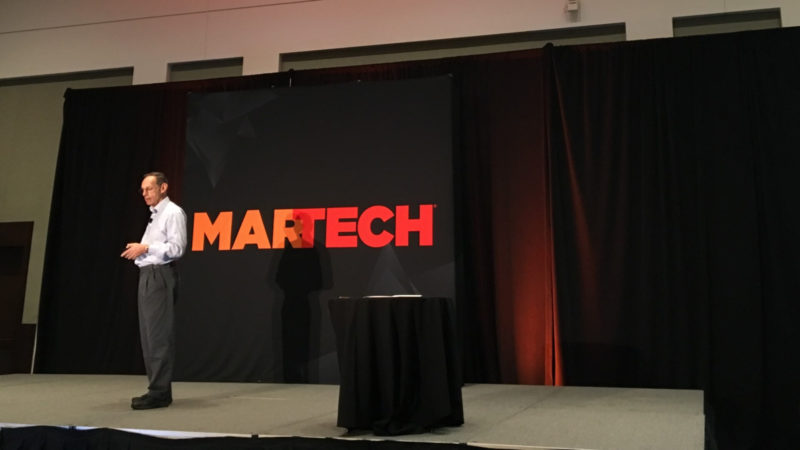Customer data platforms ‘not a silver bullet,’ says CDP Institute founder
CDP evangelist David Raab shared common myths and realities of customer data platforms during the 2018 Martech Conference in Boston.

David Raab, founder of the vendor-neutral CDP Institute, shared his insights into what CDPs (customer data platforms) can and can’t do, during Tuesday’s MarTech Conference session aptly titled “CDP Cures Baldness: Getting past the hype about customer data platforms.”
Before digging into the myths and realities around CDP systems, Raab outlined the architecture, components and adjacent systems of CDP platforms, along with his definition of the technology — a packaged software system that delivers a unified, persistent customer database and is accessible to other systems.
Related Report: Why are CDPs so hot right now?
According to Raab, a CDP is not a silver bullet capable of solving all customer data problems. The reality is that many obstacles can cause challenges when trying to employ an effective CDP system, including an organization’s budget restraints, the team’s skills and existing systems.
The Myths. To start, Raab says it’s a myth CDPs aim to coordinate customer experience across all channels, and that their value depends on connecting all systems. He says it’s also a myth that CDPs are for marketing teams only, but instead can benefit all customer-facing departments — or that they manage only first-party data. Other myths, according to Raab, include the notion that CDPs are a new technology or that all CDP solutions are the same. In fact, Raab says, CDPs vary widely in scope and vertical specialty.
The Realities. Counter to the idea CDPs coordinate customer data across all channels, Raab says the reality is the most common CDP application is centered around a business’s analytics needs, followed by single channel personalization. He also believes the theory that a CDPs value relies on its ability to connect to all systems is wrong as many CDP use cases work with only a few systems, or even just one.
According to Raab, CDPs are designed to sync with application data stores — not replace them. CDPs also use third-party data, and do not have to rely only on first-party data. They can also access data from external systems in real-time versus just the data ingested by the platform.
When evaluating CDP systems, Raab says a business’s use cases should drive its decision process.
“Analyze the vendors carefully,” said Raab, “Find out if someone is using the system the way you want to use the system.”
You can view Raab’s full presentation below.
Contributing authors are invited to create content for MarTech and are chosen for their expertise and contribution to the search community. Our contributors work under the oversight of the editorial staff and contributions are checked for quality and relevance to our readers. MarTech is owned by Semrush. Contributor was not asked to make any direct or indirect mentions of Semrush. The opinions they express are their own.
Related stories